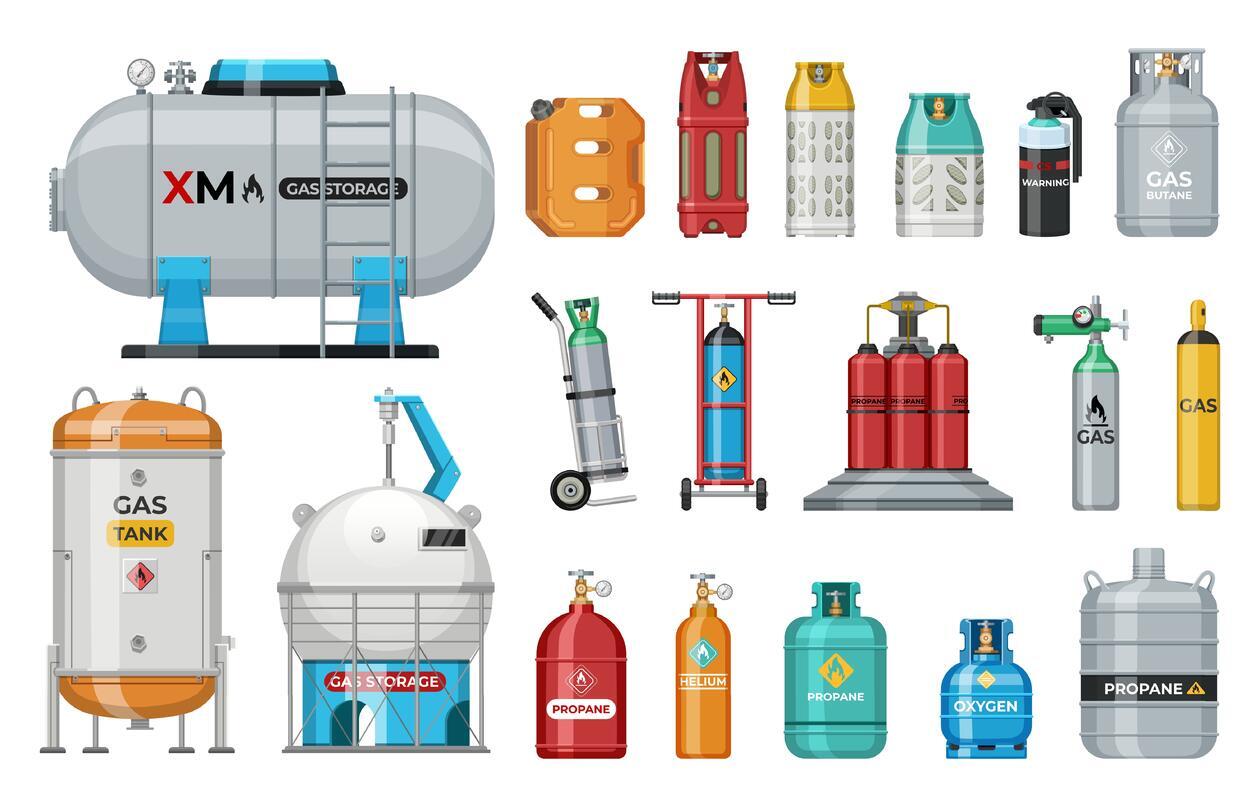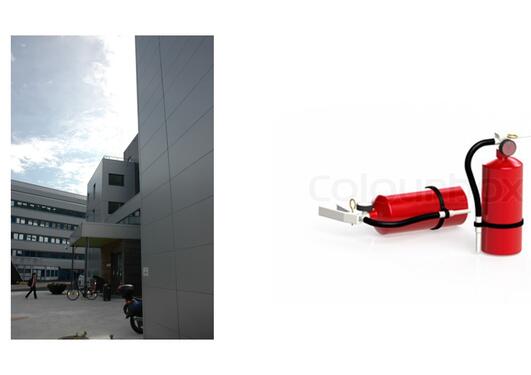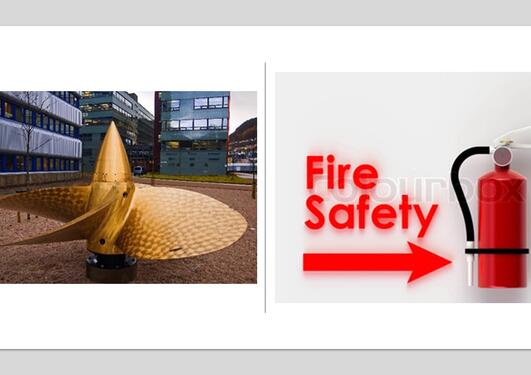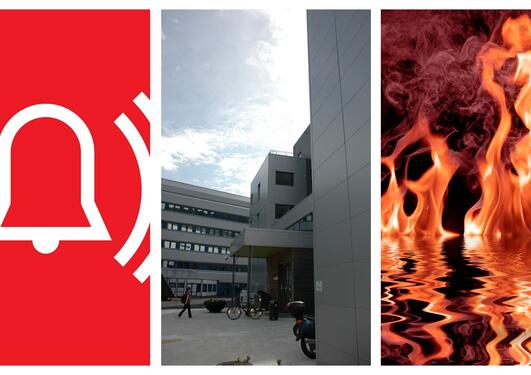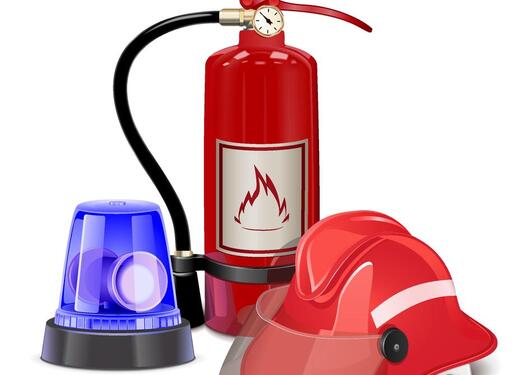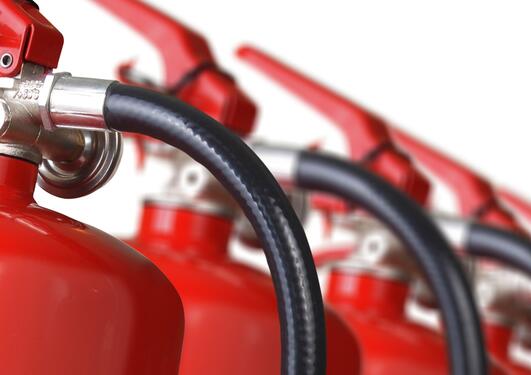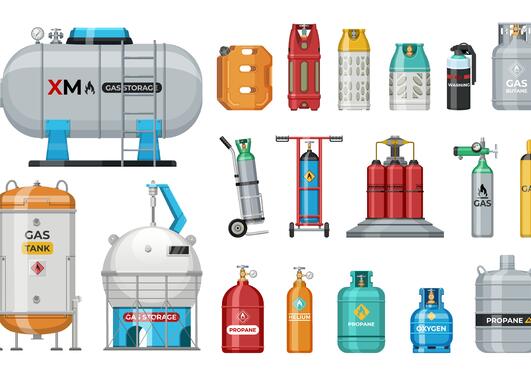Specific fire instructions at BIO
Main content
FIRE INSTRUCTIONS FOR COURSE LABORATORIES AND LECTURE HALLS
For lectures, courses, and other teaching activities, the lecturer or the person in charge for the teaching is responsible for following the instructions given in the HSE-gateway.
The responsible person must ensure:
- effective evacuation of the classrooms if the fire alarm is triggered, and report to the user representative (orange vest) outside the building
- that necessary assistance is given to disabled persons, evacuate them to the stairwell and ensure that this is reported to the user representative who will pass on the information to security or the fire brigade
- that information is provided on the safe use of methane gas in teaching laboratories
FLAMMABLE CHEMICALS
Store flammable chemicals in a fireproof cabinet, in as small quantities as possible.
Use fume hoods when working with flammable liquids that can emit flammable gases or vapours. Flammables in gas state can be light or heavy; in the latter case they tend to accumulate on the bench or floor – be aware of that. Flammable gases and vapours can be accidentally ignited by gas flames, static electricity, and sparks from electrical appliances - bear this in mind when working with flammable chemicals. Do a risk assessment prior to your work and maintain all the necessary safety precautions while working.
Classification of spirits
According to The Wine Monopoly (vinmonopolet), liquids that contain more than 40% alcohol are classified as Flammable liquid, category 1 - Liquid with flash point <23 oC and boiling point ≤ 35 oC corresponding to GHS category 1. (Old legislation used the term A-liquid). Keep this in mind when working with alcohol solutions.
Keep the labs tidy. Store all flammable chemicals (solids, liquids, and gases) in a fireproof cabinet /drawer while not in use. Flammables should not be left on the benches overnight. This can be crucial for the potential development of a fire, and for the safety and work of the firefighters.
FLAMMABLE GASES
Once the fire alarm is activated, the supply of burning gas closes automatically. Activating the fire alarm in the A&B block or in the BIO block closes the gas supply in the given building. The gas supply in the building unaffected by the fire alarm remains open.
In case of an uncontrolled leakage of burning gas, it is necessary to evacuate the area and summon the fire brigade.
The following flammable gasses are used in the BIO premises.
- Hydrogen
- Methane
- Propane
Oxygen is also used at BIO; it is not a flammable gas, but its presence is a necessary condition for the spreading of fire, thus oxygen flasks should be treated with the same caution as flasks with flammable gases.
In case of fire, close the bottle(s) with flammable gases and/or oxygen before leaving the building, if doing so is practically possible and doesn’t expose you to danger.
More information related to gas under pressure and safe handling of gas bottles are available on the HSE-gateway.
ELECTRICAL EQUIPMENT AND BATTERIES
All electrical equipment must be intact, securely placed and operated in accordance with regulations. Extension cables shall not be used as a main principle. Clean and maintain the equipment according to the supplier's recommendations, as incorrect use of electrical equipment is a common cause of fire.
- Coffee makers and kettles MUST be equipped with timers and ONLY placed in lunchrooms and coffee corners.
- Coffee machine with timer is allowed in offices.
- Microwaves are prohibited in places other than public areas such as lunchrooms and coffee corners. During use, one must be present to avoid scorched food with emissions of smoke that can trigger the fire alarm. The microwave oven must not be placed directly under the fire detector.
- Hotplates or stoves are not permitted for the preparation of food. Use microwave. Otherwise, refer to the canteen for hot food.
- Refrigerators should not be placed in offices for hygiene and cleaning problem. In addition, power consumption is a negative factor.
- Waste disposal - see the HSE-handbook
FIRE INSTRUCTIONS FOR WORKING DURING NIGHT
If the fire alarm is activated after normal working hours, leave the building immediately. There are no fire drills outside working hours, which means that leaving the building is especially important: this could be a real fire. While working outside normal working hours in any of the buildings equipped with a voice-based alarm (Biologen, 53A/B), listen to the content of the message and follow the instructions.
In case of a fire alarm outside normal working hours, the security guards will reach the main entrance within a short time. Report to the guards that you came out and follow their instructions. If no additional actions are required from you, go to the meeting point at the Propeller (between and Datablokk and VilVite) and wait until the situation is under control. Do not re-enter the building before you are explicitly told that it is safe to do so.
In the case of experiments that require people to work during night, a risk assessment must be made in advance. It must also be reported to EiA via Lydia so that the security guards know that there are people in the building through the night, and where they are.
In principle, it is not allowed to sleep in UiBs buildings. If you have an experiment with 24-hour follow-up, and it is planned to rest or sleep during the night, it should be organized so that two people are present at the same time. Then one person can lie down to rest while the other is awake, to take care of evacuation if necessary. If only one person is present at night, he or she cannot lie down to sleep, for safety reasons.
EVENTS AT EVENINGS
Any events at the evenings should be reported to Eia. Regulations and form/link to report events can be found here:
UiB's rules for using the unit’s own premises after the usual hours (UiBhjelp)
